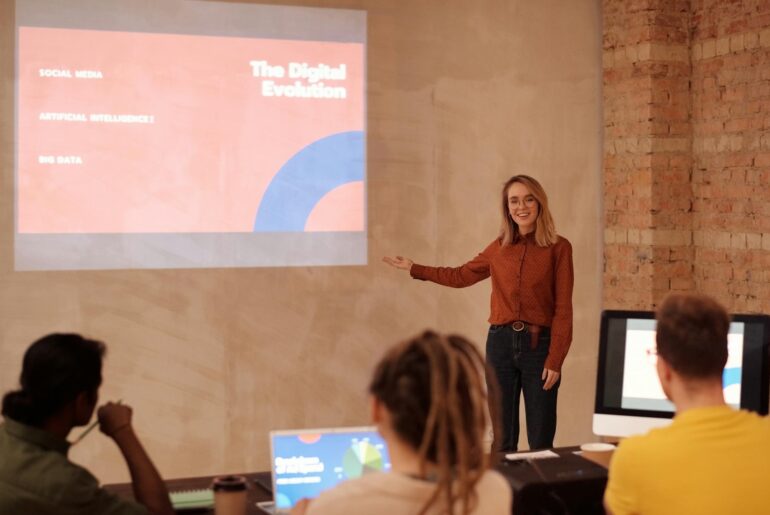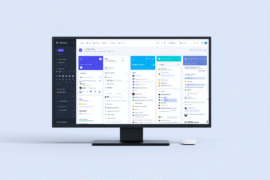This article may contain references to products or services from one or more of our advertisers or partners. We may receive compensation when you click on links to those products or services. Nonetheless, our opinions are our own.
The information presented in this article is accurate to the best of our knowledge at the time of publication. However, information is subject to change, and no guarantees are made about the continued accuracy or completeness of this content after its publication date.
- How AI Helps Bridge the Workforce Skills Gap
- Understanding the Skills Gap and Its Impact on Your Career
- Gaining Awareness: Identifying Strengths and Gaps
- Smarter Learning with AI Tools
- Practical Ways to Use AI for Career Growth
- How Employers Can Help
- Frequently Asked Questions
- What is the skills gap?
- What causes the skills gap?
- How does AI contribute to addressing the skills gap?
- What are some examples of AI tools used for skill development?
- Can AI help employers find the right talent?
- What should organizations do to leverage AI in addressing the skills gap?
- What role do individuals play in closing the skills gap?
- Final Thoughts: Building Toward a Skilled Future
- Recommended Reads
How AI Helps Bridge the Workforce Skills Gap
Success today requires adaptability and a commitment to continuous learning. Across healthcare, technology, clean energy, and manufacturing, a common challenge remains: the widening skills gap—a mismatch between employer needs and worker capabilities.
Artificial intelligence provides practical solutions to narrow this divide through personalized, data-driven support.
Understanding the Skills Gap and Its Impact on Your Career
A skills gap arises when job requirements evolve faster than workers’ abilities. As industries embrace new tools and systems, many professionals struggle to keep up—creating barriers to employment and advancement.
Skills Gap Across Sectors and How AI Can Help
| Industry | Skills Gap | AI Solutions |
|---|---|---|
| Technology | Data Analysis, Cybersecurity | Online courses, skill assessments |
| Healthcare | Telemedicine Skills, Data Management | Training simulations, virtual coaching |
| Renewable Energy | Project Management, Technical Expertise | Interactive learning modules, mentorship platforms |
AI-powered platforms now help identify these gaps and guide focused development.
Gaining Awareness: Identifying Strengths and Gaps
Identifying your existing skills is crucial for personal growth. AI tools simplify this by comparing your current capabilities to job market trends.
This can evaluate resumes to highlight competencies, recommend skills based on hiring trends, offer assessments to measure proficiency and create tailored learning paths.
Voted "Best Overall Budgeting App" by Forbes and WSJ
Monarch Money helps you budget, track spending, set goals, and plan your financial future—all in one app.
Get 50% OFF your first year with code MONARCHVIP
Smarter Learning with AI Tools
Today’s learning platforms do more than teach—they adapt. Powered by AI, they adjust to your pace and learning style, making education more efficient and relevant.
Benefits include:
- Short, focused lessons for flexible schedules
- Personalized content aligned with career goals
- Progress tracking with adaptive feedback
- Certification recommendations based on skill gaps
Practical Ways to Use AI for Career Growth
AI’s potential goes beyond learning. It also helps manage and improve your career with real-time, data-informed tools.
Everyday Uses of AI in Skill Development
Skill Mapping
Compare your resume with job postings to find gaps.
Personalized Learning Paths
AI adjusts course content to your pace and goals.
Interview Simulations
Practice interviews with feedback on tone, timing, and clarity.
Market Trend Monitoring
Receive alerts when new skills become highly in demand.
How Employers Can Help
Individual effort matters—but company support accelerates progress. Employers who invest in development create stronger, more resilient teams.
Companies can:
- Assess internal skills to identify growth opportunities
- Provide access to AI-powered training tools
- Encourage continuous learning as part of culture
Organizations like IBM and AT&T have implemented successful AI-supported reskilling programs—helping employees stay competitive as technology evolves.
Frequently Asked Questions
What is the skills gap?
The skills gap refers to the disparity between the skills that employers need and the skills that the workforce possesses. This gap can manifest in various sectors, resulting in unfilled job vacancies and a workforce that may not be prepared for the demands of the evolving job market.
What causes the skills gap?
Several factors contribute to the skills gap, including rapid technological advancements, changes in industry demands, inadequate education and training programs, and a mismatch between the skills taught in schools and those required by employers. Additionally, the increasing complexity of jobs today frequently outpaces the ability of educational institutions to keep up.
How does AI contribute to addressing the skills gap?
AI can play a pivotal role in bridging the skills gap by providing personalized learning experiences, identifying skill deficiencies, and offering targeted training recommendations. Through AI-powered platforms, learners can receive real-time feedback and tailored content, making skill development more efficient and relevant.
What are some examples of AI tools used for skill development?
There are numerous AI tools designed for skill development, such as adaptive learning platforms that adjust content delivery based on a learner’s progress, virtual mentors that provide guidance, and skills assessment tools that analyze individual competencies to recommend specific training pathways.
Can AI help employers find the right talent?
Yes, AI can significantly enhance the recruitment process. By utilizing algorithms that analyze resumes and applicants’ skill sets, employers can streamline their hiring processes. AI can help identify candidates who possess the necessary skills, even if they come from non-traditional backgrounds, broadening the talent pool.
What should organizations do to leverage AI in addressing the skills gap?
Organizations should invest in AI-driven learning platforms, encourage a culture of continuous learning, and foster partnerships with educational institutions to ensure alignment between curriculum and industry needs. Additionally, they should actively monitor labor market trends to adapt their training programs accordingly.
What role do individuals play in closing the skills gap?
Individuals can take proactive steps to bridge the skills gap by engaging in lifelong learning, seeking out training opportunities, and being open to reskilling or upskilling. Embracing new technologies and understanding their application in the workplace can help individuals remain competitive in the job market.
Final Thoughts: Building Toward a Skilled Future
Artificial intelligence is revolutionizing the way people learn and grow. With the right tools, professionals can build relevant skills faster and more effectively, gaining not just knowledge but momentum.
As job markets continue to evolve, those who work alongside AI will have a competitive edge, poised to meet the future with focus and flexibility.

Reviewed and edited by Albert Fang.
See a typo or want to suggest an edit/revision to the content? Use the contact us form to provide feedback.
At FangWallet, we value editorial integrity and open collaboration in curating quality content for readers to enjoy. Much appreciated for the assist.
Did you like our article and find it insightful? We encourage sharing the article link with family and friends to benefit as well - better yet, sharing on social media. Thank you for the support! 🍉
Article Title: Mind the Skills Gap: What It Is and How AI Can Help
https://fangwallet.com/2025/04/19/closing-skills-gap/The FangWallet Promise
FangWallet is an editorially independent resource - founded on breaking down challenging financial concepts for anyone to understand since 2014. While we adhere to editorial integrity, note that this post may contain references to products from our partners.
The FangWallet promise is always to have your best interest in mind and be transparent and honest about the financial picture.
Become an Insider

Subscribe to get a free daily budget planner printable to help get your money on track!
Make passive money the right way. No spam.
Editorial Disclaimer: The editorial content on this page is not provided by any of the companies mentioned. The opinions expressed here are the author's alone.
The content of this website is for informational purposes only and does not represent investment advice, or an offer or solicitation to buy or sell any security, investment, or product. Investors are encouraged to do their own due diligence, and, if necessary, consult professional advising before making any investment decisions. Investing involves a high degree of risk, and financial losses may occur including the potential loss of principal.
Source Citation References:
+ Inspo
There are no additional citations or references to note for this article at this time.












































